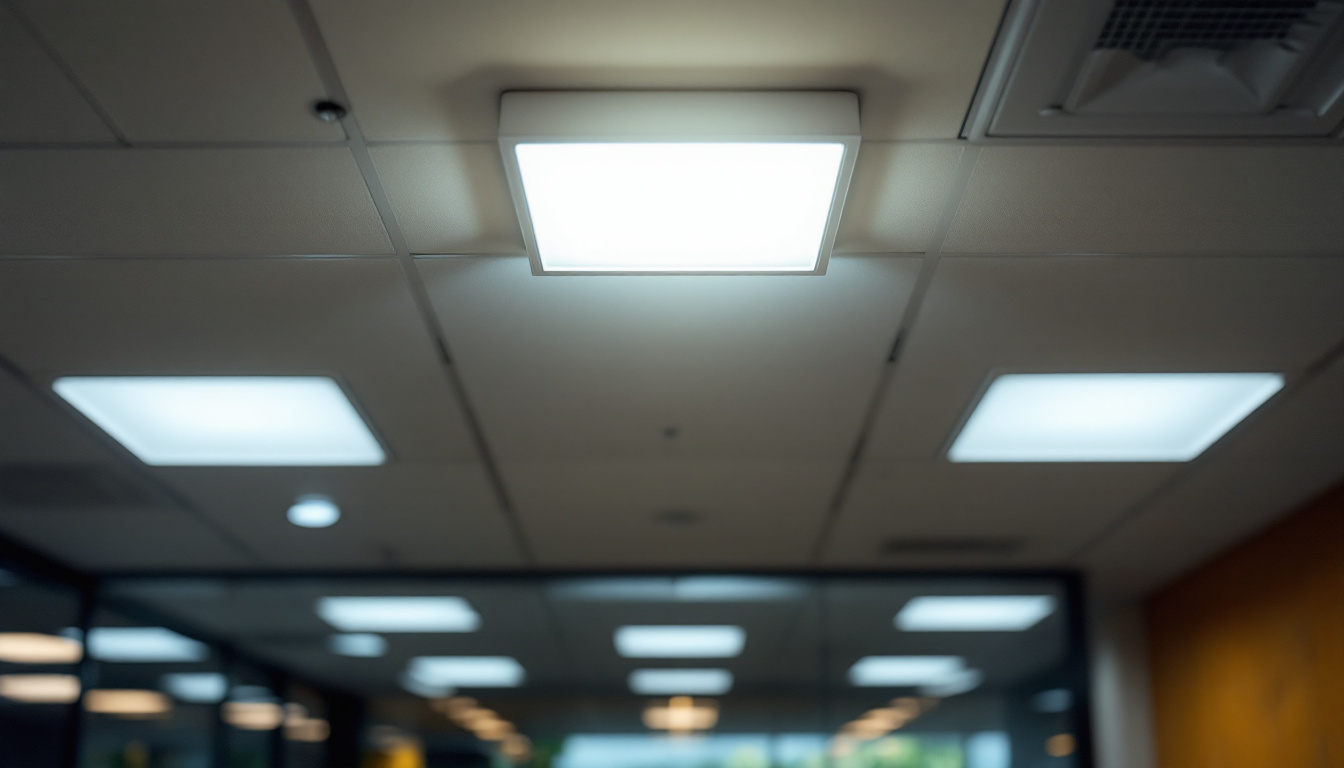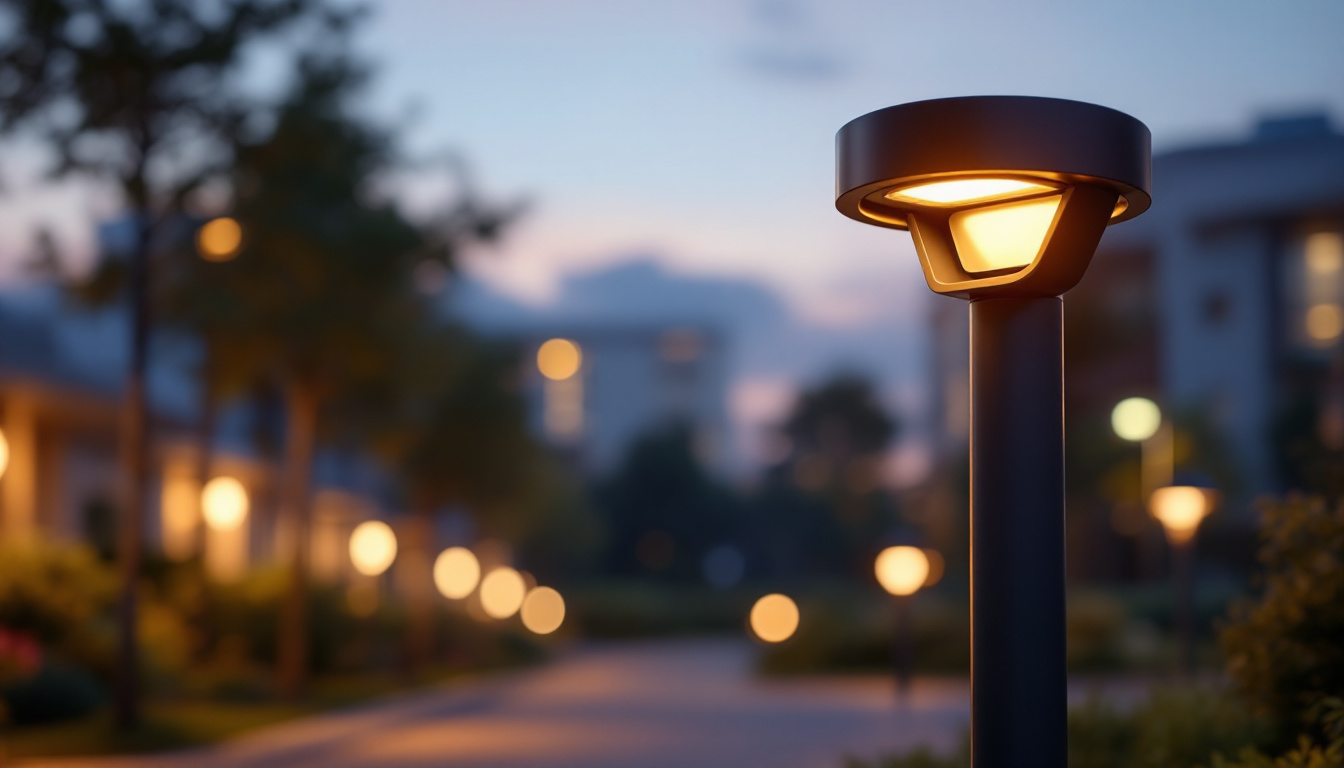
In the world of commercial lighting, the troffer light fixture stands out as a popular choice for many applications. Its sleek design, energy efficiency, and versatility make it an essential component for lighting contractors. This guide aims to provide a comprehensive overview of troffer light fixtures, covering their features, benefits, installation tips, and maintenance considerations.
Troffer light fixtures are typically recessed lighting units that fit into a modular ceiling grid system. They are commonly used in offices, schools, hospitals, and retail environments. The design allows for a clean, unobtrusive look while providing ample illumination.
Troffer fixtures are usually rectangular and can accommodate various light sources, including fluorescent, LED, and even incandescent bulbs. The most common sizes are 1×4, 2×2, and 2×4 feet, making them adaptable to different ceiling layouts. The housing is typically made from durable materials like steel or aluminum, ensuring longevity and resistance to wear and tear.
One of the key design features of troffer fixtures is their ability to diffuse light evenly across a space. Many models come with a lens or a grid that helps to minimize glare, making them suitable for environments where visual comfort is a priority. This is particularly important in settings like classrooms or hospitals, where harsh lighting can lead to discomfort or eye strain. Furthermore, the integration of advanced optics in some modern troffer designs enhances light distribution, ensuring that every corner of the room is well-lit without creating hot spots or shadows.
There are several types of troffer fixtures available, each designed for specific applications. Traditional fluorescent troffers have been a staple in commercial lighting for decades. However, the shift towards energy-efficient solutions has led to the rise of LED troffer fixtures.
LED troffers offer numerous advantages over their fluorescent counterparts, including lower energy consumption, longer lifespan, and reduced maintenance costs. Additionally, many LED models feature adjustable color temperatures, allowing contractors to customize the lighting to meet the needs of the space. This flexibility is particularly beneficial in environments that require different lighting conditions throughout the day, such as offices that transition from bright, focused light during work hours to softer, more ambient lighting for meetings or social gatherings. Moreover, some LED troffers are equipped with smart technology that enables dimming and scheduling capabilities, further enhancing energy efficiency and user control.
Troffer light fixtures come with a range of benefits that make them a preferred choice for many lighting projects. Understanding these advantages can help lighting contractors make informed decisions when selecting fixtures for their clients.
One of the most significant benefits of troffer fixtures, particularly LED models, is their energy efficiency. LED troffers consume significantly less power than traditional fluorescent fixtures, which can lead to substantial savings on energy bills. This efficiency not only benefits the environment but also appeals to clients looking to reduce operational costs. Additionally, many LED troffer lights have a longer lifespan compared to their fluorescent counterparts, often lasting up to 50,000 hours or more. This longevity means fewer replacements and reduced maintenance costs over time, making them a smart investment for any facility.
Troffer fixtures are highly versatile and can be used in various settings. Their ability to blend seamlessly with different ceiling types makes them suitable for both new constructions and retrofitting existing spaces. Whether it’s an office, classroom, or healthcare facility, troffer fixtures can provide the necessary illumination while enhancing the overall aesthetics of the environment. Furthermore, these fixtures come in a variety of styles, sizes, and configurations, allowing designers to choose options that best suit the specific needs of the space. For instance, some troffers are designed to accommodate dimming capabilities, enabling users to adjust the brightness according to the time of day or specific activities, which adds to their functional versatility.
With advancements in lighting technology, modern troffer fixtures offer improved light quality. Many LED models provide a high Color Rendering Index (CRI), which ensures that colors appear more vibrant and true to life. This quality is crucial in environments like art galleries or retail spaces, where accurate color representation is essential. Moreover, the uniform light distribution of troffer fixtures minimizes shadows and reduces glare, creating a more comfortable and productive atmosphere for occupants. This is particularly beneficial in workspaces where employees need to focus on detailed tasks, as it can enhance concentration and reduce eye strain. Additionally, some troffer fixtures incorporate smart lighting technology, allowing for programmable settings that can adapt to different activities throughout the day, further enhancing the overall lighting experience in any space.
Proper installation of troffer light fixtures is critical to achieving optimal performance and longevity. Lighting contractors must be aware of several key factors during the installation process to ensure a successful outcome.
Before installing troffer fixtures, it is essential to assess the compatibility with the existing ceiling structure. Most troffers are designed to fit into standard grid ceilings, but modifications may be necessary for other types of ceilings. Ensuring a proper fit will help avoid issues with alignment and stability. Additionally, it is important to consider the ceiling’s material and thickness, as these factors can influence the mounting method and the fixture’s overall stability. For instance, drywall ceilings may require different support mechanisms compared to suspended ceilings, necessitating a thorough evaluation prior to installation.
When installing troffer fixtures, attention must be given to the wiring and power supply. Contractors should ensure that the electrical system can handle the load of the new fixtures. Additionally, following local electrical codes and regulations is crucial to ensure safety and compliance. It is also advisable to use high-quality wiring and connectors to prevent potential issues such as overheating or short circuits. Furthermore, incorporating energy-efficient LED troffers can significantly reduce energy consumption and extend the lifespan of the fixtures, making it a worthwhile consideration during the planning phase.
The placement and spacing of troffer fixtures can significantly impact the overall lighting quality of a space. Contractors should consider factors such as the height of the ceiling, the purpose of the room, and any obstructions that may affect light distribution. A well-planned layout ensures even illumination and minimizes shadows. For optimal results, it may be beneficial to conduct a lighting simulation or use photometric data to determine the best arrangement. This approach allows contractors to visualize how light will interact with the space, ensuring that areas requiring more illumination, such as workstations or reading areas, receive adequate lighting. Additionally, considering dimming options can enhance flexibility, allowing users to adjust the light levels based on specific tasks or preferences.
To ensure that troffer light fixtures continue to perform well over time, regular maintenance is essential. Lighting contractors should inform clients about the importance of upkeep to prolong the life of the fixtures.
Dust and dirt can accumulate on the surface of troffer fixtures, reducing their efficiency and light output. Regular cleaning is necessary to maintain optimal performance. Contractors should recommend using a soft cloth or a duster to gently clean the fixtures without damaging the surface or lens.
For fluorescent troffer fixtures, replacing bulbs at the end of their lifespan is crucial to maintaining consistent light levels. In the case of LED troffers, while the bulbs may not need replacement as frequently, it’s essential to check for any malfunctioning components. Promptly addressing any issues can prevent further damage and ensure continued performance.
Regular inspections of troffer fixtures can help identify potential issues before they become significant problems. Lighting contractors should encourage clients to schedule periodic checks, especially in high-use environments. Additionally, staying informed about advancements in lighting technology can help contractors recommend upgrades that enhance energy efficiency and light quality.
With a wide variety of troffer light fixtures available on the market, selecting the right one for a specific application can be challenging. Lighting contractors should consider several factors when making their choice.
The light output, measured in lumens, is a critical factor in selecting troffer fixtures. Contractors should assess the needs of the space to determine the appropriate lumen output. Additionally, considering the fixture’s efficacy, or lumens per watt, can help ensure energy-efficient choices.
Choosing the right color temperature is essential for creating the desired ambiance in a space. Troffer fixtures are available in various color temperatures, ranging from warm white to cool daylight. The Color Rendering Index (CRI) should also be considered, as a higher CRI will provide better color accuracy, which is particularly important in environments where color differentiation is crucial.
Modern troffer fixtures often come with various control options, including dimming capabilities and smart lighting integration. Contractors should discuss these options with clients to determine the best fit for their needs. Implementing advanced control systems can enhance energy savings and improve the overall user experience.
Troffer light fixtures are an integral part of commercial lighting solutions, offering versatility, energy efficiency, and improved light quality. For lighting contractors, understanding the features, benefits, and installation considerations of these fixtures is essential for delivering high-quality lighting solutions to clients.
By staying informed about the latest advancements in troffer technology and maintenance practices, contractors can ensure that their installations meet the evolving needs of their clients while maximizing energy savings and performance. Ultimately, the right troffer fixture can transform a space, making it more functional and aesthetically pleasing.
As the demand for energy-efficient lighting continues to grow, troffer fixtures will remain a staple in the lighting industry, providing reliable and effective solutions for a variety of applications.
Ready to elevate your lighting projects with the best troffer light fixtures on the market? Look no further than LumenWholesale. Our commitment to quality and affordability ensures that you have access to spec-grade lighting products that meet the highest industry standards. Say goodbye to local distributor markups and hello to unbeatable wholesale prices, free shipping, and the convenience of bulk buying. Transform your commercial spaces with confidence, knowing you’re backed by the perfect blend of performance and value. Discover our extensive selection and take advantage of the best value in wholesale lighting today by visiting Wholesale Lighting at the Best Value.

Discover innovative ways to enhance your lighting solutions with parking lights.
Discover why lighting contractors should prioritize ILP Industrial Lighting Products in their projects.

Discover how Electric Switc is revolutionizing smart lighting with innovative contractor approaches.

Explore the transformative impact of levitation technology on the lighting industry.